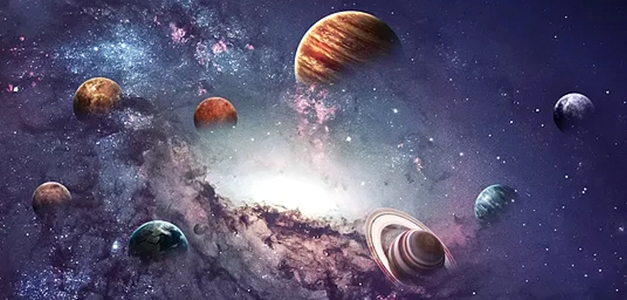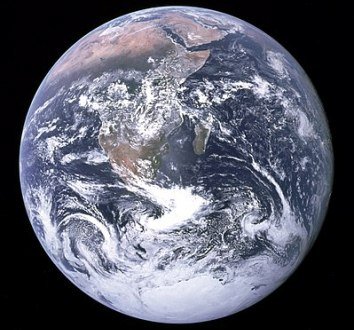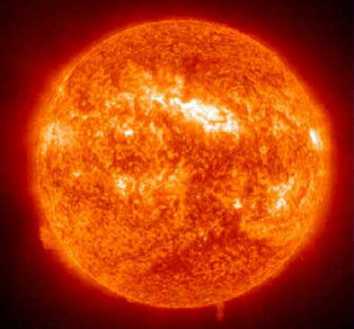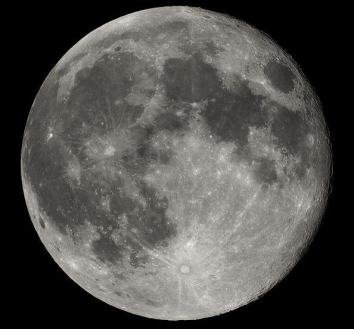Cuerpos Celestes 101 (Parte 1)/ Celestial Bodies 101 (Part 1)
Antes de empezar con este tema, debo decir que yo tenía un blog en donde escribía sobre cualquier cosa que me interesara; mitología, literatura, cómics, películas, videojuegos, astronomía… Nunca me di a la tarea de promocionarlo, sólo mi familia y amigos lo leían.
Hace unas semanas, hablando con un amigo que extrañaba mi blog, me sugirió que publicara en Steemit algunos de esos artículos, para que más gente pudiera leerlos. Después de pensarlo un poco me dije a mí misma ‘hum, sí ¿por qué no? No pierdo nada con eso’. Esta publicación viene de mi viejo blog, pero con algunos retoques, espero que les guste y que comenten.
Before I begin going on about this topic I have to say that I used to have a blog where I wrote about anything I found interesting; mythology, literature, comic books, movies, video games, astronomy… I never promoted it, so only my family and my friends read it.
Some weeks ago, when speaking with a friend that missed my blog, he suggested that I post some of my old blog’s articles on Steemit so more people could read them. After thinking about it for a while, I told myself ‘hmm, yeah, why not? I don’t lose anything by trying’. Thus, this post comes from my old blog. I edited it a little bit, though. I hope you like it! Comments are appreciated.
Cuerpos celestes/Celestial bodies

Son entidades naturales (reales o hipotéticas) que se hallan más allá de la atmósfera de nuestro planeta. Un cuerpo celeste es una entidad singular, por lo tanto las galaxias, al estar compuestas por muchos de ellos, son objetos astronómicos, no cuerpos celestes. Los planetas, estrellas, satélites naturales, asteroides, cometas, agujeros negros, entre otros, sí lo son.
They are natural entities (real or hypothetic) that are beyond our planet’s atmosphere. A celestial body is a singular unit, therefore galaxies, which are composed by several of them, are considered astronomical objects, not celestial bodies. Planets, stars, natural satellites, asteroids, comets, black holes and others, are celestial bodies.
Planetas/Planets

Según la Unión Astronómica Internacional (UAI), un planeta es un cuerpo celeste que cumple con ciertas características específicas: orbita alrededor de una estrella o lo que queda de ella, tiene suficiente masa para que su gravedad lo haga tener una forma casi esférica, no emite luz propia (a diferencia de las estrellas) y tiene dominancia orbital por sobre otros cuerpos celestes menores.
According to The International Astronomical Union (IAU), a planet is a celestial body that meets some specific requirements: it orbits around a star or what’s left of a star; it has enough mass so its gravity gives it an almost spherical shape; it doesn’t emit its own light (unlike stars) and it exerts orbital dominance above smaller celestial bodies.
Estrellas/Stars

Las estrellas son sumamente interesantes y podría dedicarles una publicación entera (probablemente lo haré en un futuro). Son cuerpos celestes gaseosos que emiten luz propia y mantienen su forma gracias a un equilibrio de fuerzas que existe en ellas. La fuerza de gravedad empuja la materia hacia adentro (al centro de la estrella) y la presión, creada por la energía que se genera dentro de la estrella, empuja la materia hacia afuera (intentando que se expanda).
Las estrellas están compuestas, en pequeñas cantidades, por muchos elementos químicos que podemos encontrar en la Tierra (incluso metales), pero los elementos que predominan en ellas son hidrógeno y helio. Existen diferentes tipos de estrellas y se pueden clasificar según su tamaño, su luminosidad y otras características similares.
Stars are really interesting and I could write an entire post about them (I will probably do so in the future). They’re gaseous celestial bodies that are able to emit their own light. They keep their shapes thanks to a balance of forces inside them. The force of gravity push matter inwards (to the center of the star), and the pressure, made out of the energy generated inside the star, push matter outward (trying to make it expand).
Stars are made, in small quantities, of many chemical elements that can be found on planet Earth (even metals), but the dominant elements that compose them are hydrogen and helium. There are several types of stars and they can be classified by their size, their luminosity, and other characteristics.
Satélites naturales/Natural satellites

Son cuerpos celestes que orbitan alrededor de los planetas y los acompañan en su traslación alrededor de la estrella que ellos orbitan. Los satélites son mucho más pequeños que los planetas que acompañan, cuando no lo son, no se habla de satélite sino de sistema binario de planetas (término no reconocido por la UAI).
Se les llama satélites naturales para diferenciarlos de los que fueron creados por el hombre. El más claro ejemplo de satélite natural podemos observarlo todas las noches (si no está nublado). A veces creciente, o tal vez llena o menguante. Puede verse pequeña, también verse grande. Muchas veces sonriente, rara vez roja brillante, pero siempre presente en nuestra vida y nuestro arte. La luna (Je,je. Eso me salió casi como rima infantil).
These are celestial bodies that orbit around planets and accompany said planets in their movement around the star they orbit. Natural satellites are considerably smaller than the planets they orbit; when a celestial body orbiting a planet has a similar mass to said planet, it isn’t a satellite but a binary planet (term not recognized by IAU).
They are known as natural satellites to differentiate them from the ones made by man. The best example of a natural satellite can be observed every night if the sky isn’t obscured by clouds. Crescent at times, full or waning. It can look small, and also gigantic. Many times it’s smiling, rarely reddish and shinning. But it’s always present in our lives and art (ok, it rhymes in Spanish and I tried, I really tried to make it rhyme in English also. Sorry I failed). The moon.

Notas/Notes
Los objetos astronómicos son entidades o asociaciones físicas considerables cuya existencia en el Universo ha sido confirmada por la ciencia. Los cuerpos celestes son objetos astronómicos y, a su vez, hay objetos astronómicos que están formados por conjuntos de cuerpos celestes, como las galaxias o los cinturones de asteroides.
Cuerpo celeste hace referencia a una sola entidad. Las galaxias y los sistemas planetarios, al estar formados por muchos cuerpos celestes, son objetos astronómicos mas no cuerpos celestes.
Un Sistema binario de planetas es un sistema en el que dos planetas de masa similar orbitan entre sí.
Astronomical objects are considerable physical entities or associations whose existence in our Universe has been confirmed by science. Celestial bodies are astronomical objects and, at the same time, there are astronomical objects made by groups of celestial bodies, like galaxies and asteroid belts.
A celestial body refers to a single entity. Galaxies and planetary systems are astronomical objects because they are made by many celestial bodies, but they aren’t celestial bodies themselves.
A binary planet is a system in which two planets of similar mass orbit each other.

Espero que les haya gustado la primera parte de este post. Si han aprendido algo nuevo, si les ha parecido interesante o si quieren decir algo, no se olviden de comentar.
I hope you liked this post's first part. If you learned something new, if you think it's interesting or if you want to say something, don't forget to leave a comment.
Me encantó, este tema en particular me ha encantado desde niña, gracias!